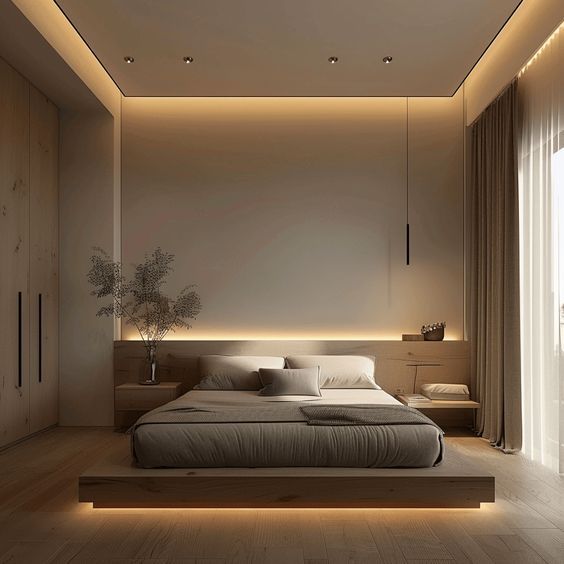The bedside table, often an afterthought in bedroom design, plays a surprisingly significant role in both the aesthetics and functionality of your personal sanctuary. More than just a surface to hold a lamp, it serves as a convenient storage solution, a charging station, and a key element that ties your bedroom’s style together. Choosing the “perfect” bedside table isn’t just about picking one that looks nice; it’s about finding a piece that seamlessly integrates with your lifestyle, complements your bedroom’s decor, and provides the functionality you need.
This guide will walk you through the essential considerations to help you select a bedside table that is both practical and stylish.
1. Assess Your Needs and Lifestyle
Before you even begin browsing, think about how you use your bedside area. This will dictate the type and amount of storage you require.
- Minimalist: If you only need space for a lamp and a glass of water, a simple floating shelf or a small, open-frame table might suffice.
- Reader: If you keep multiple books, e-readers, and reading glasses by your bed, you’ll need a table with ample surface area and perhaps a shelf or a drawer.
- Tech Enthusiast: For those who charge multiple devices overnight, look for tables with integrated charging ports (USB-A, USB-C, or wireless charging pads) and good cable management solutions.
- Clutter-Conscious: If you prefer a tidy, uncluttered look, opt for tables with closed storage, such as drawers or cabinets, to hide away personal items.
- Display Lover: If you enjoy displaying decorative items, photos, or plants, an open-shelf design or a larger surface area will be beneficial.
2. Consider Size and Scale
The dimensions of your bedside table are crucial for both functionality and visual harmony.
- Height: Ideally, the top of your bedside table should be roughly level with the top of your mattress. This ensures that items are easily accessible without straining, and it creates a balanced look. If it’s too low, you’ll have to reach down; too high, and it can feel awkward and visually dominant.
- Width: Consider the available space between your bed and the wall or other furniture. Ensure there’s enough room to comfortably open drawers or navigate around the table. For smaller rooms, slim or narrow designs are essential.
- Depth: Think about how far the table will protrude into the room. A deeper table offers more surface area and storage but can make a narrow room feel cramped.
3. Material Matters
The material of your bedside table contributes significantly to its durability, maintenance, and overall aesthetic.
- Natural Wood (Oak, Walnut, Teak): Offers warmth, durability, and a timeless appeal. Different wood types and finishes can suit various styles, from rustic to Scandinavian modern.
- Metal (Steel, Brass, Matte Black): Provides an industrial, contemporary, or even glamorous touch. Metal frames with wood or glass tops are popular for a mixed-material look.
- Glass: Adds a light, airy, and sophisticated feel. Tempered glass is durable but can show fingerprints and dust more easily.
- Lacquered or Painted MDF: Versatile and often more affordable, these materials come in a wide range of colours and finishes (high-gloss or matte), offering a sleek, contemporary appearance.
- Stone or Concrete Accents: For a touch of luxury and unique texture, elements of marble, travertine, or concrete can be incorporated, adding a sculptural quality.
4. Style and Aesthetics
Your bedside table should complement your bedroom’s existing decor, whether it’s modern, traditional, bohemian, or industrial.
- Match or Complement: While matching furniture sets are less common in modern design, your bedside table should at least complement the bed and other bedroom furniture in terms of style, colour palette, and material.
- Minimalist: Opt for clean lines, simple shapes, and neutral colours.
- Mid-Century Modern: Look for tapered legs, rich wood tones, and perhaps a touch of brass.
- Industrial: Combine raw wood with dark metals.
- Bohemian: Consider rattan, woven textures, or reclaimed wood.
- Glamorous: Think mirrored surfaces, polished metals, or lacquered finishes.
- Asymmetrical Pairings: Don’t feel obligated to buy two identical tables. Using two different, yet complementary, tables can add personality and visual interest.
5. Functionality and Features
Beyond basic storage, many modern bedside tables offer enhanced features.
- Storage Types: Decide between open shelves (for display), drawers (for hidden storage), or a combination. Consider soft-close drawers for a touch of luxury.
- Integrated Charging: As mentioned, built-in wireless charging pads or USB ports are incredibly convenient for keeping devices powered overnight without unsightly cables.
- Built-in Lighting: Some tables incorporate LED strips or subtle lights, providing ambient illumination or a dedicated reading light.
- Cable Management: Look for cutouts or channels that help keep charging cables tidy and out of sight.
- Multi-functional Design: Some tables may include pull-out trays, adjustable heights, or even integrated Bluetooth speakers for added utility.
Conclusion
Choosing the perfect bedside table is a thoughtful process that goes beyond mere aesthetics. By considering your personal needs, the practicalities of size and material, and how the table integrates with your bedroom’s overall style, you can select a piece that not only enhances your decor but also simplifies your daily routine, contributing to a more organized and tranquil sleeping environment.


